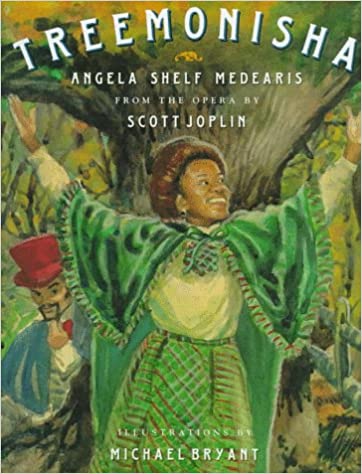Constructing Uplift and Womanhood: Treemonisha's Plot and Libretto
By: Demi Browder, LaShaunda McWright, Kennedy Taylor, Kyleigh Brown, and De'Ja Smith
How We Feel About Treemonisha
Scott Joplin in the Role of Treemonisha
Treemonisha is a well-known opera of excellence that was composed by Scott Joplin in the early part of the 1900s but not performed until the 1970s. Although a ragtime opera, each scene consisted of a unique musical style that related to different genres such as folk music, negro spirituals, jubilee quartet and blues. Joplin created his own atmosphere of communication through music to allow the audience to feel the emotion of the each setting.

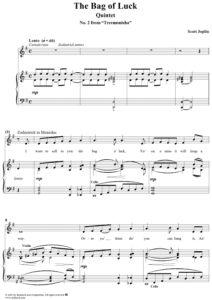
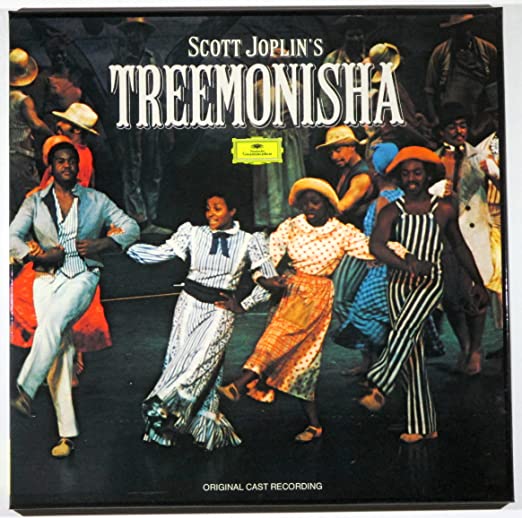
Treemonisha's Story
The plot of the story is about a young lady who, as a child, was found under a tree by a couple who adopted her. Her name is a reflection of her mother (Monisha) and the tree she was found under. When Treemonisha becomes curious of why other girls wore wreaths of leaves in their hair and and she wore a bonnet, her mother is forced to explain her background and the sacredness of the tree. The tree symbolizes Treemonisha’s survival nature and viewing the tree “sacred” symbolized the old negro superstitions of the early 1900s. Her mother she exchanged chores and yard work for her education where Treemonisha was taught by a white woman. Being educated, Treemonisha fought vigorously to lead her community out of the ignorance driven by the magic tricks of the conjurer. Because of her unwillingness to succumb to the superstitions and traditions that the conjurers are trying to sell, Treemonisha is tortured until she is rescued by her friend Remus – who dresses as the devil to scare off the conjurers. The conjurers were fooled by their own superstitions as they had been lying to fool the people. Treemonisha and Remus captures two of the conjurers before returning back home and when the community plans to punish the conjurers for what they have done, Treemonisha decides to forgive them. The music turns dramatically slow to express the compassion that Treemonisha has for her enemies who had tried to bring harm to her. The community including the men viewed Treemonisha as a hero and named her as their leader.
Beyond the Plot
The chapter “Constructing Uplift and Womanhood: Treemonisha’s Plot and Libretto” reflects on how Treemonisha supports the uplift ideology in areas such as “education, morality, and progress”, but can contradict uplift in the differences between it and the typical setting and context for such a production. Joplin shows the difference between the educated and uneducated people of the town through dialect, and much of Treemonisha’s character and plot focuses on her being the only educated person in her neighborhood. Treemonisha also promotes progress (which includes getting an education) in that the people in Treemonisha’s neighborhood had the power and organization to place her as their leader. Another way Treemonisha supported the uplift ideology was through her behavior as a woman, as she did not engage in any romantic relationships or have a romantic interest throughout the opera. She was seen as a proper woman, other than her ability to lead the people, as women were typically more in charge of domestic duties at the time.
Womanhood In Treemonisha
Treemonisha takes a complex take on gender, especially black womanhood. During this era, the contributions of male leaders often overshadowed that of the women. This did not however, silence the women of this era. In fact this is referred to as a period of “black female intellectual activity.” Treemonisha possessed musical elements of ragtime, a genre that women were no stranger to. Hundreds of female ragtime composers contributed to the genre and piano became more and more popular. The treatment of black women was starkly different from the treatment of white women. New jobs that required piano qualities were held by white women. Black women and people overall were portrayed negatively in comparison to the portrayal of white women.The most recent reinvention of Treemonisha pays ode to black women because the creative team and orchestra are composed of entirely black women. Modern renditions make women more of the central focus whereas in the original she doesn’t sing much.
Hazel Scott, jazz artist and classical pianist, whose influences are rooted in ragtime.
Final Thoughts
In conclusion Treemonisha is an opera by American ragtime composer Scott Joplin that embodies the significance of a black woman. The significance that most people don’t recognize today. Scott Joplin transforms Treemonisha into a woman of independent thinking, courageous, strength, and a determination of change. The way Treemonisha expands feminism allowed women to feel a sense of importance and fight for the place besides their “designated” role men has set for them. Scott Joplin clearly recognized the true meaning of a woman, specifically a Black Woman and decided to share that with the world so others can see their importance as well. Treemonisha is a play that should reflect into the “norm” today and help open the eyes of those who are stuck in what the “woman’s role” should be.
Other Works on This Topic
The Rise of Ragtime
Ragtime first introduced in the late 1890s introduced a unique style of music that consisted of a lively and syncopated rhythm that would continue to
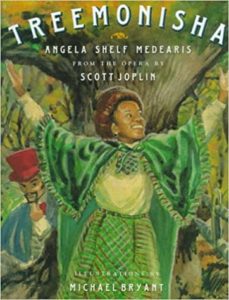
Constructing Uplift and Womanhood: Treemonisha’s Plot and Libretto
Constructing Uplift and Womanhood: Treemonisha’s Plot and Libretto By: Demi Browder, LaShaunda McWright, Kennedy Taylor, Kyleigh Brown, and De’Ja Smith How We Feel About Treemonisha
Treemonisha: Difference, Power, and Music
Treemonisha: Difference, Power, and Music In the opera Treemonisha, by Scott Joplin, there is difference and power displayed in the music of the quintet that
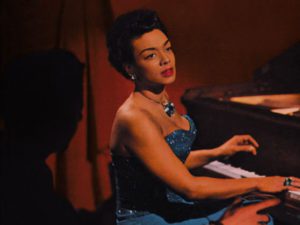
The Forgotten Jazz Pianist
Introduction Jazz is a genre of music originating in New Orleans, in the late 19 century is heavily based on improvisation. During Jazz performances, players

Sue Keller
Women in Ragtime: Sue Keller Born on July 7, 1952, Sue Keller is a ragtime pianist who has served as the music director of the
Women in Ragtime: Rosa Henderson
Rosa Henderson Women in Ragtime When attempting to look up information on women singers and performers of the Ragtime era, you
Other Works by Authors
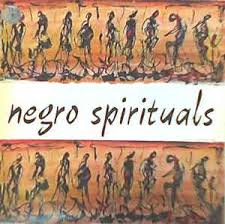
Evolution of Negro Spirituals
The Evolution of Negro Spirituals By Kyleigh Brown Origin of Spirituals During The Great Awakening, many slaves were influenced by Christianity and began developing their

Folk Secular Music
Folk Secular Music History History Previous Next Folk Secular Music was cultivated for the purpose of creating a bridge between the roots of African Americans’
Whats Goin On with Marvin Gaye? Marvin Gaye is responsible for some of the most iconic love anthems of all time. As a singer, songwriter,
Tina Turner: Queen of Rock and Roll Known for her stage presence, hair, red lipstick, and versatility between genres. Tina turner is inarguably the Queen
Musiq SOULchild
Thesis Musiq Soulchild is a male artist who has made various projects that have truly implemented the concept of soul into his music. In this

The Evolution of Gospel Music Gospel music is a genre of Christian Music that can be traced back to the 17th Century but emerged in

